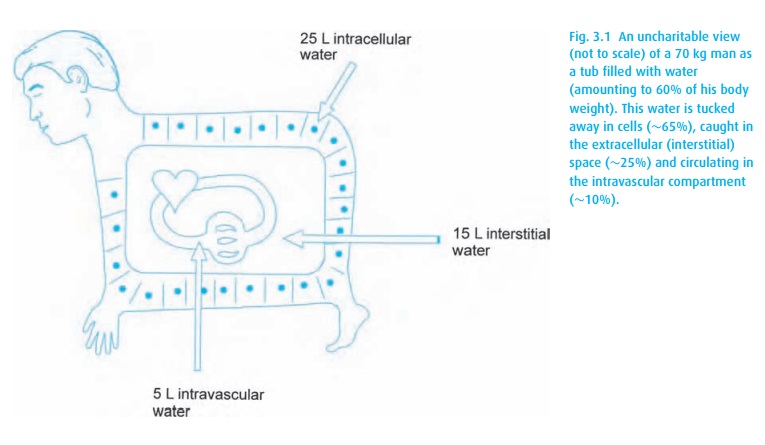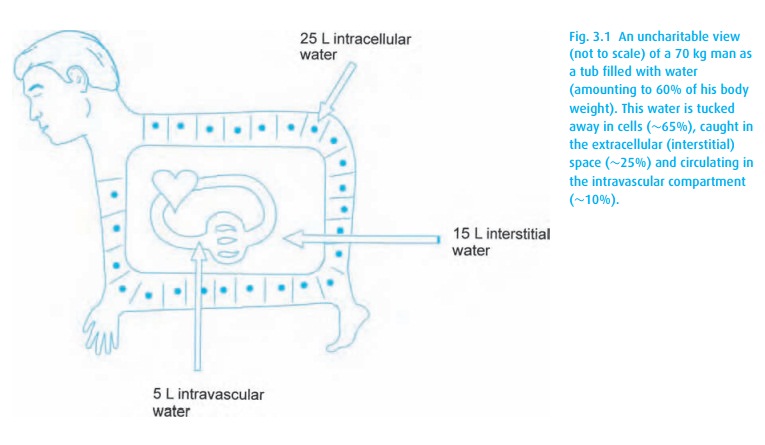Chapter: Essential Anesthesia From Science to Practice : Clinical management : Vascular access and fluid management
Vascular access and fluid management

Vascular access and fluid
management
We tend
to forget that we humans (and many of our animal relatives) are mostly water.
When we think about it, we must marvel how the body stores the bulk of this
water in cells and the interstitial, extracellular fluid, where much of the
water is tied up in gel. Suspended in this interstitial lake is the vascular
compartment, comparatively puny in volume but most important because of its
rapid transport of fluids, nutrients, and waste throughout the system, and its
continuous and efficient exchange of water with the interstitial compartment
(Fig. 3.1). Clinically, we can see
dehydration in sunken eyeballs, wrinkling skin and dry lips, or the excess of
fluids in edema and swollen eyes; we can even hear it should water collect in
the alveoli.

Related Topics